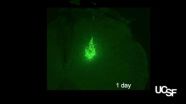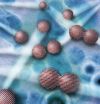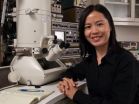A boost in microRNA may protect against sepsis and other inflammatory diseases
2012-05-28
(Press-News.org) BOSTON, MA—Acute inflammatory diseases, such as sepsis, as well as chronic inflammatory diseases like diabetes and arthritis, develop as a result of sustained inflammation of the blood vessel wall. Researchers at Brigham and Women's Hospital (BWH) have discovered that a microRNA (small, non-coding RNA molecule) called miR-181b can reduce the inflammatory response that is responsible for such diseases.
The findings, by researchers led by Mark Feinberg, MD from BWH and Harvard Medical School, will pave the way for new targets in the development of anti-inflammatory therapies.
The study is published in the May 24, 2012 online edition of The Journal of Clinical Investigation.
The researchers identified that expression of miR-181b was reduced in both mice and critically ill patients with sepsis. Sepsis is a devastating whole-body inflammatory condition due to infection and is associated with reduced survival.
Each one unit increase in microRNA-181b was associated with a decrease in the odds of having sepsis, suggesting that higher levels of miR-181b may be protective.
The inflammatory response (such as that which causes sepsis) is regulated by a major signaling pathway known as NF-kB. The researchers found that miR-181b is a potent regulator of this pathway within blood vessel walls. miR-181b specifically targets importin-alpha3, a protein essential in NF-kB signaling.
Overexpression of miR-181b inhibited importin-alpha3 expression, as well as other molecules involved in the NF-kB signaling pathway; thereby, reducing the inflammation response.
The researchers discovered this after giving miR-181b intravenously in mice with sepsis. This led to increased survival and reduced inflammatory damage in the lungs of septic mice.
"We have discovered a microRNA that is important in dampening the inflammatory response and reducing tissue injury by targeting NF-kB in the lining of the blood vessel wall, known as the vascular endothelium," said Feinberg. "The beneficial role of this microRNA in sepsis is likely the tip of the iceberg since excessive inflammation is a pervasive finding in a wide-range of acute and chronic diseases."
In the accompanying commentary, Drs. Jason Fish and Myron Cybulsky from the University of Toronto note that microRNAs, such as miR-181b, may be exciting and attractive targets for future vascular inflammatory disease therapeutics.
###Funding for this work came from the National Institutes of Health grants (HL091076, HL115141, F32HL088819); American Cancer Society grant; Boston Area Diabetes Endocrinology Research Center grant; and a Watkins Cardiovascular Medicine Discovery award.
Brigham and Women's Hospital (BWH) is a 793-bed nonprofit teaching affiliate of Harvard Medical School and a founding member of Partners HealthCare, an integrated health care delivery network. BWH is the home of the Carl J. and Ruth Shapiro Cardiovascular Center, the most advanced center of its kind. BWH is committed to excellence in patient care with expertise in virtually every specialty of medicine and surgery. The BWH medical preeminence dates back to 1832, and today that rich history in clinical care is coupled with its national leadership in quality improvement and patient safety initiatives and its dedication to educating and training the next generation of health care professionals. Through investigation and discovery conducted at its Biomedical Research Institute (BRI), www.brighamandwomens.org/research, BWH is an international leader in basic, clinical and translational research on human diseases, involving more than 900 physician-investigators and renowned biomedical scientists and faculty supported by more than $537 M in funding. BWH is also home to major landmark epidemiologic population studies, including the Nurses' and Physicians' Health Studies and the Women's Health Initiative. For more information about BWH, please visit www.brighamandwomens.org.
ELSE PRESS RELEASES FROM THIS DATE:
2012-05-28
A seaweed considered a threat to the healthy growth of coral reefs in Hawaii may possess the ability to produce substances that could one day treat human diseases, a new study led by scientists at Scripps Institution of Oceanography at UC San Diego has revealed.
An analysis led by Hyukjae Choi, a postdoctoral researcher in William Gerwick's laboratory at Scripps, has shown that the seaweed, a tiny photosynthetic organism known as a "cyanobacterium," produces chemical compounds that exhibit promise as anti-inflammatory agents and in combatting bacterial infections. The ...
2012-05-28
Chronic pain, by definition, is difficult to manage, but a new study by UCSF scientists shows how a cell therapy might one day be used not only to quell some common types of persistent and difficult-to-treat pain, but also to cure the conditions that give rise to them.
The researchers, working with mice, focused on treating chronic pain that arises from nerve injury -- so-called neuropathic pain.
In their study, published in the March 24, 2012 issue of Neuron, the scientists transplanted immature embryonic nerve cells that arise in the brain during development and ...
2012-05-28
A new study led by scientists in the Department of Biology at the University of York has shown how a butterfly has changed its diet, and consequently has sped northwards in response to climate change.
Their study is published in the latest issue of Science.
The researchers found that warmer summers have allowed the Brown Argus butterfly to complete its life cycle by eating wild Geranium plants. Because the Geraniums are widespread in the British countryside, this change in diet has allowed the butterfly to expand its range in Britain at a surprisingly rapid rate. Over ...
2012-05-28
Our cells breathe and digest, as does the organism as a whole. They indeed use oxygen to draw the energy contained in the nutrients they ingest, before discarding the waste, as carbon dioxide and water. Glucose is a preferred nutrient for the cells. Its digestion occurs in the cytoplasm, in the absence of oxygen, and leads to the formation of pyruvate and a small amount of energy. Pyruvate is then carried into mitochondria, the cell's power plants, for a complete burning, thus providing a maximal energetic yield.
A mediocre energetic yield in tumor cells
'As opposed ...
2012-05-28
Science magazine has awarded a prize for Inquiry-Based Instruction to a Case Western Reserve University class that melds biology, computer modeling, mathematical analysis and writing.
"Dynamics of Biological Systems," taught by Biology Professor Hillel Chiel and three graduate assistants, abandons traditional lectures altogether in favor of learning by doing. The teachers call the class an example of the use of the continual improvement model in education.
In it, Chiel pairs biology majors with engineering, physics or math majors, and has them concentrate on building ...
2012-05-28
Through biomineralization, nature is able to produce such engineering marvels as mother of pearl, or nacre, the inner lining of abalone shells renowned for both its iridescent beauty and amazing toughness. Key to biomineralization is the phenomenon known as "oriented attachment," whereby adjacent nanoparticles connect with one another in a common crystallographic orientation. While the importance of oriented attachment to biomineral properties long has been recognized, the mechanism by which it occurs has remained a mystery. With a better understanding of oriented attachment ...
2012-05-28
VIDEO:
Berkeley Lab researchers at the National Center for Electron Microscopy recorded real-time observations of nanocrystal growth that support the theory of nanoparticles acting like artificial atoms. This electron microscopy movie...
Click here for more information.
In the growth of crystals, do nanoparticles act as "artificial atoms" forming molecular-type building blocks that can assemble into complex structures? This is the contention of a major but controversial ...
2012-05-28
Boston, MA —Harvard School of Public Health (HSPH) researchers have found that detailed knowledge about your genetic makeup—the interplay between genetic variants and other genetic variants, or between genetic variants and environmental risk factors—may only change your estimated disease prediction risk for three common diseases by a few percentage points, which is typically not enough to make a difference in prevention or treatment plans. It is the first study to revisit claims in previous research that including such information in risk models would eventually help doctors ...
2012-05-28
(SALT LAKE CITY)—Research into how carbohydrates are converted into energy has led to a surprising discovery with implications for the treatment of a perplexing and potentially fatal neuromuscular disorder and possibly even cancer and heart disease.
Until this study, the cause of this neuromuscular disorder was unknown. But after obtaining DNA from three families with members who have the disorder, a team led by University of Utah scientists Jared Rutter, Ph.D., associate professor of biochemistry and Carl Thummel, Ph.D., professor of human genetics, sequenced two genes ...
2012-05-28
CORVALLIS, Ore. — There's nothing like a new pair of eyeglasses to bring fine details into sharp relief. For scientists who study the large molecules of life from proteins to DNA, the equivalent of new lenses have come in the form of an advanced method for analyzing data from X-ray crystallography experiments.
The findings, just published in the journal Science, could lead to new understanding of the molecules that drive processes in biology, medical diagnostics, nanotechnology and other fields.
Like dentists who use X-rays to find tooth decay, scientists use X-rays ...
LAST 30 PRESS RELEASES:
[Press-News.org] A boost in microRNA may protect against sepsis and other inflammatory diseases


